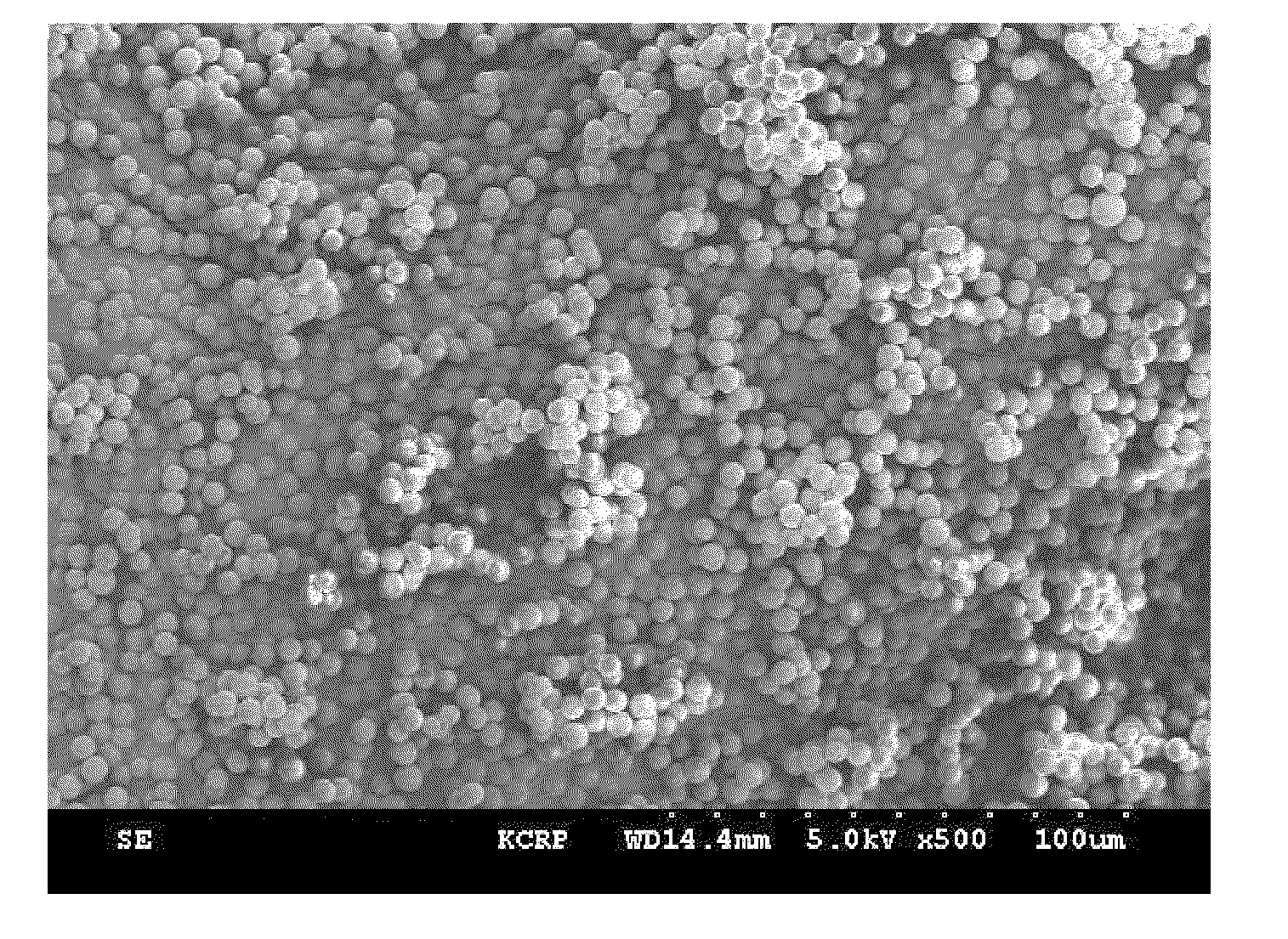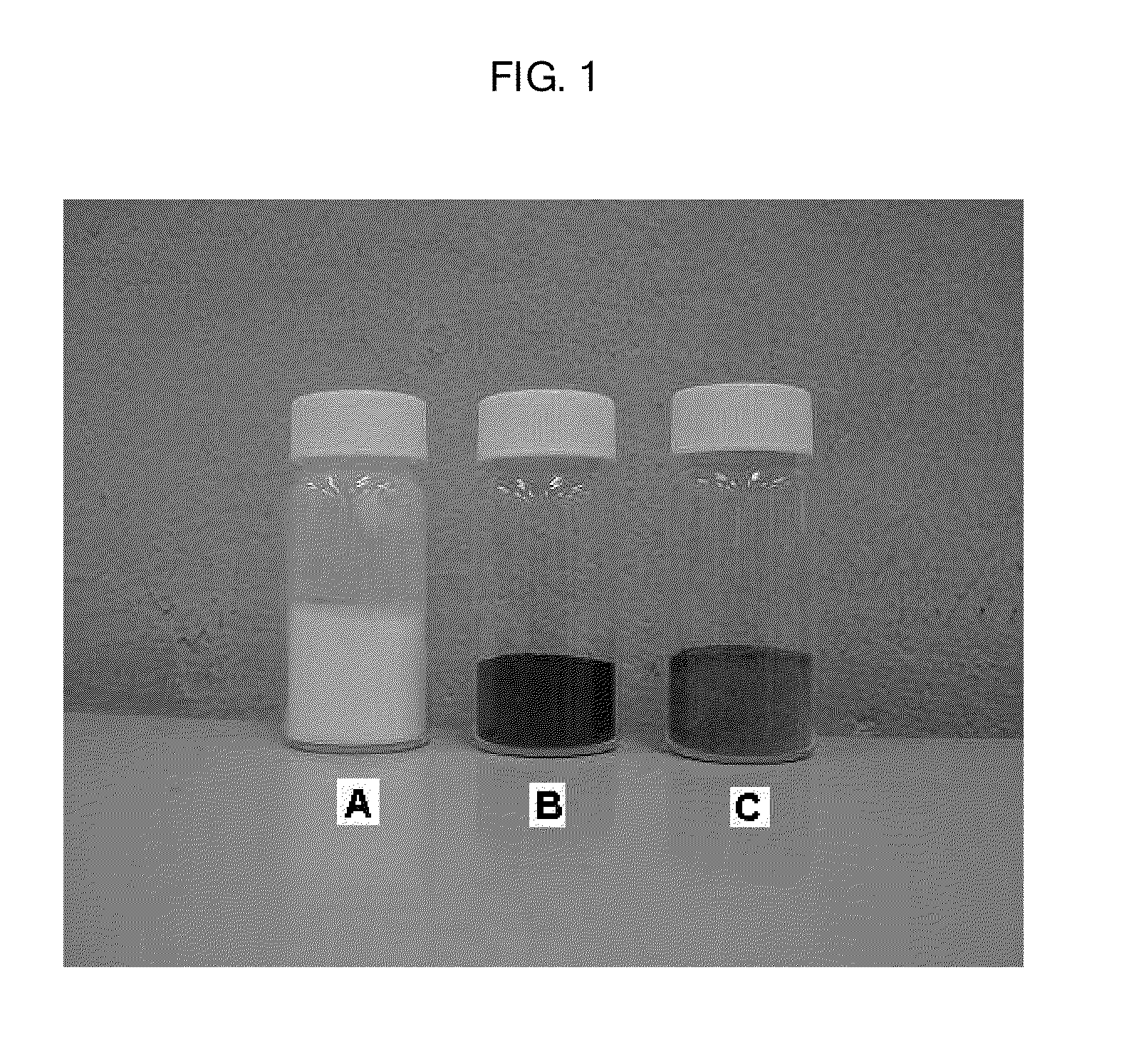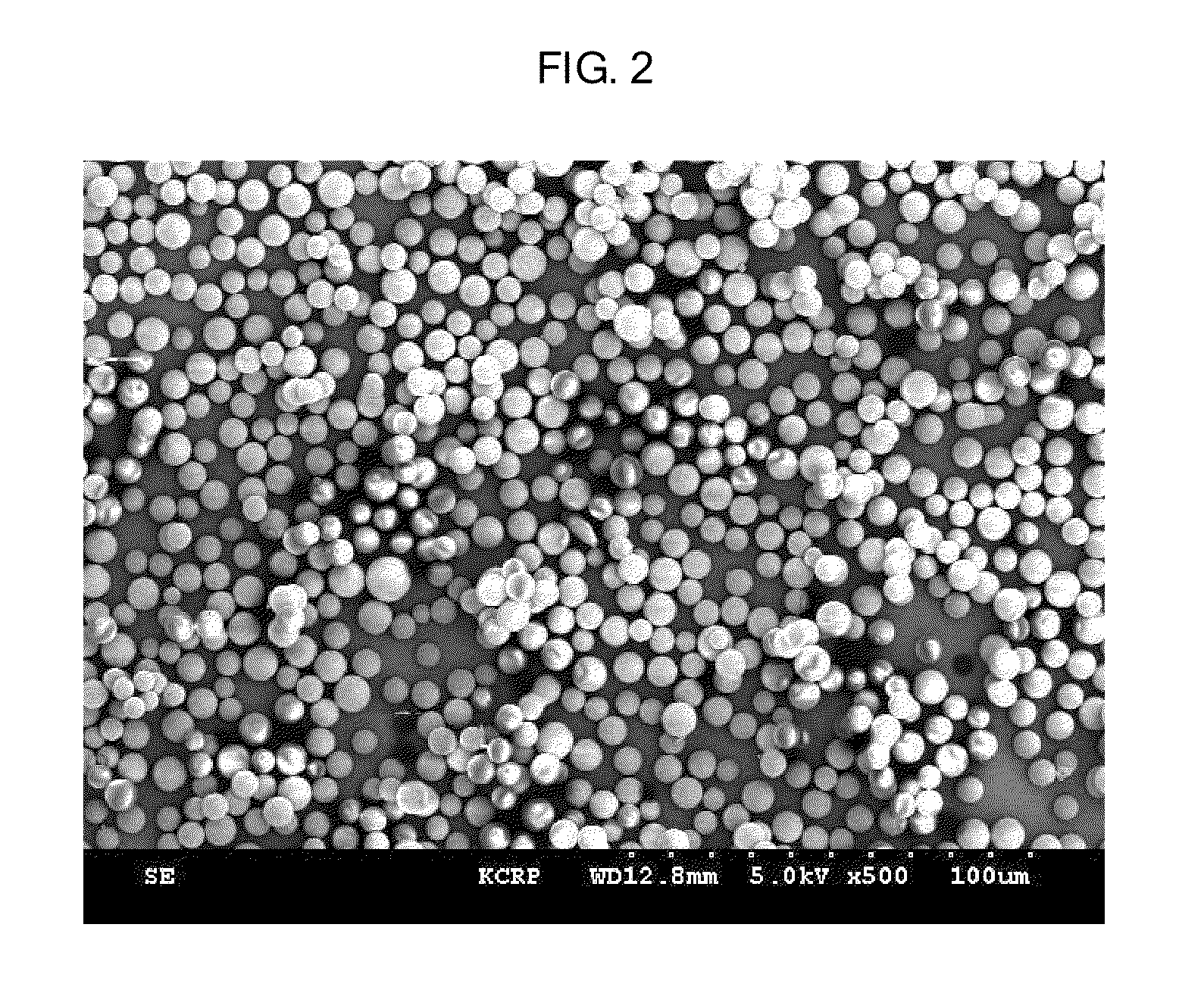Process For Preparing Polyurethane Particulate and Polyurethane Particulate Prepared Therefrom
a technology of polyurethane and particulate, which is applied in the field of preparation of polyurethane particulate and polyurethane particulate, can solve the problems of amorphous form rather than spherical form, high manufacturing cost, and complex process, and achieves uniform and regular size distribution, easy washing, and easy control of particle size and form
- Summary
- Abstract
- Description
- Claims
- Application Information
AI Technical Summary
Benefits of technology
Problems solved by technology
Method used
Image
Examples
example 1
[0050]10 g of Calcium carbonate as a suspension stabilizer was dissolved in 1000 g of ion-exchange water as a dispersion medium.
[0051]70 g of caprolactone diol having dihydroxy groups and having a molecular weight of 2000 and 100 g of non-yellowing isophorone diisocyanate having diisocyanate groups were added to the mixture, and the suspension was prepared by stirring for 30 minutes at 600 rpm. The prepared suspension was added to a 3 l flask and the temperature was raised to 70° C., and the resultant was reacted for 6 hrs at 250 rpm and then cooled. The reaction solution was separated into solid and liquid states with a centrifuge and the resultant was sufficiently washed with water and dried, thereby obtaining spherical polyurethane beads having an average particle size of 9.5 μm.
[0052]The polyurethane beads had a thermoplastic property, and when the dispersion agent was washed, a white powder could be easily obtained through the drying process because the washing was easily perfo...
example 2
[0053]Polyurethane beads were prepared by the same method as in Example 1, except for using 70 g of caprolactone triol having trihydroxy groups and having a molecular weight of 700. The finally prepared spherical polyurethane beads had a thermosetting property and an average particle size of 9.8 μm. cl EXAMPLE 3
[0054]Thermosetting and spherical polyurethane beads having an average particle size of 10.4 μm were prepared by the same method as in Example 1, except for using 70 g of caprolactone diol having dihydroxy groups and having a molecular weight of 2000 and 100 g of non-yellowing polyisocyanate having tri-isocyanate groups (AEKYUNG CHEMICAL: DN-980S).
example 4
[0055]Thermosetting and spherical polyurethane beads having an average particle size of 10.8 μm were prepared by the same method as in Example 1, except for using 70 g of caprolactone triol having trihydroxy groups and having a molecular weight of 700 and 100 g of non-yellowing polyisocyanate having tri-isocyanate groups (AEKYUNG CHEMICAL: DN-980S).
PUM
| Property | Measurement | Unit |
|---|---|---|
| particle size | aaaaa | aaaaa |
| shore hardness | aaaaa | aaaaa |
| melting point | aaaaa | aaaaa |
Abstract
Description
Claims
Application Information
 Login to View More
Login to View More - R&D
- Intellectual Property
- Life Sciences
- Materials
- Tech Scout
- Unparalleled Data Quality
- Higher Quality Content
- 60% Fewer Hallucinations
Browse by: Latest US Patents, China's latest patents, Technical Efficacy Thesaurus, Application Domain, Technology Topic, Popular Technical Reports.
© 2025 PatSnap. All rights reserved.Legal|Privacy policy|Modern Slavery Act Transparency Statement|Sitemap|About US| Contact US: help@patsnap.com



